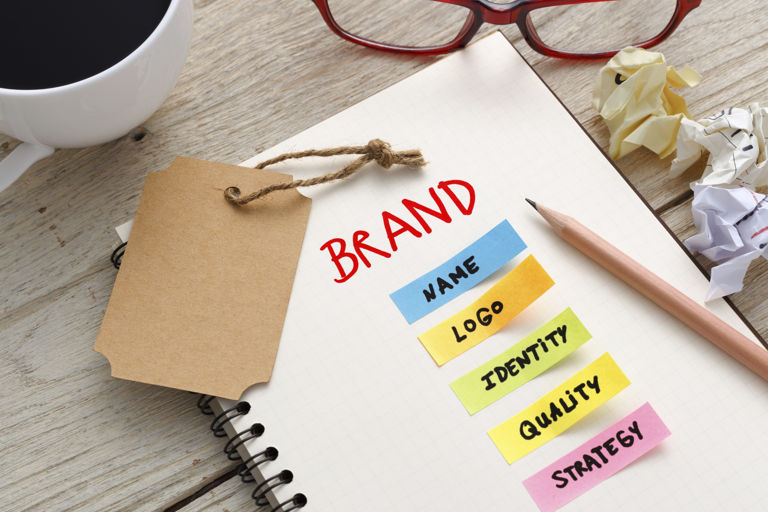How to build a visual style guide to create a consistent brand identity

Posted: Wed 10th Aug 2022
Consistency is key when it comes to successful branding. An excellent way to achieve this is by creating a visual style guide.
Below, we show you how to create your very own visual style guide. Keep it simple, and keep it concise for the best results.
Why a brand identity is so important
If you don't understand how important brand identity is, you may have some homework to do. It's a truism that customers will become loyal to brands because they like particular aspects of what they stand for.
Without an identity you're just a faceless entity and consumers cannot connect emotionally to what you do. Therefore, they're unlikely to maintain ties for any period of time.
Consistency is everything in branding. As a small business, you should have created a logo by now, but this is really only step one of creating a consistent brand identity.
Once you expand and start creating different marketing materials such as business cards, a corporate website and even company stationery, you need to keep the design as uniform as possible.
An excellent way to achieve this is by creating a visual style guide. It should clearly spell out the layout, tone, typography and colour scheme to be associated with your brand.
How to create your own visual style guide
What do you stand for?
This first step is often skipped, when in reality it should be the foundation of your entire visual style guide. Designers should be able to determine the following before beginning the design process:
What your brand stands for and its goals
The anatomy of the brand's target audience
The definition of your brand's personality. Is it serious, professional, quirky or something else? What makes it special in comparison to your competitors?
Logo placement
Your brand's logo is a crucial part of its identity and once it's designed, you need to decide how to use it.
Incidentally, you also need to show designers how not the use the logo! For example, your visual style guide should outline acceptable variations along with ideal logo placement.
By now, it should be clear that the best logos are ones that can be seamlessly added to different-sized items. In other words, it should look as good on a giant screen as it does on stationery.
Colour scheme
Understanding the psychology of colour is absolutely crucial if you want your brand to resonate with customers. While you shouldn't necessarily follow template colour definitions (red = passion, blue = calm etc.), you do need to carefully analyse how the colours you choose have an impact on your customers' emotions.
When it comes to selecting your brand's colour scheme, stick to the colours used in your logo. Additionally, don't be vague – you need to provide exact colour values. This means picking precise Pantone colours and CMYK values to ensure your 'corporate colours' look the same regardless of the marketing material used.
As a rule of thumb, choose as few colours as possible. Most companies pick four at most, while classic brands tend to use one or two. If you don't believe colour is important, imagine seeing Coca-Cola in blue or McDonalds' golden arches in green! You simply wouldn't have the same connection as you do now.
Typography and fonts
Once again, consistency is the key when it comes to choosing fonts. Most brands use no more than four fonts and your visual style guide should outline different purposes of every typeface.
Generally speaking, it's best to keep your fonts either all serif or all sans-serif. The guide also needs details regarding sizing, colour, kerning (spaces between letters and words) and leading (the space between the lines of text on each page).
If your brand's identity is 'serious and professional', you'll need suitable fonts such as Arial or Times New Roman. A more fun-loving brand may opt for a font like Cooper.
Images
The photos, videos and illustrations you use must represent your brand. Canny consumers can spot a brand based on its photography.
Your style guide needs to give photographers a clear idea of what you're trying to achieve with every shot. The same goes for illustrators or those looking to upload videos. Be sure to include actual examples of what you're looking for, because photographers will find it hard to follow your instructions through text alone.
Tone
The tone of your brand must match its style. You can't have bright colours, Comic Sans font and fun-loving imagery along with academic sounding text.
Your style guide must include details of how your brand 'sounds'. This will help writers create content that's 'on brand' and retain the consistency you desire. Include specific terminology if applicable.
Key takeaways
The above is a basic overview of what your brand's visual style guide should look like. It should be more than enough to help you begin the process of building a consistent brand and you can always add more detail later.
This style guide also comes in handy when dealing with outsourced employees as it should reduce the amount of revisions required on any given project.
In simple terms, a visual style guide not only helps outline your brand and set it apart, it also leads to better productivity and efficiency. All vital ingredients for a successful business.
Relevant resources
Get business support right to your inbox
Subscribe to our newsletter to receive business tips, learn about new funding programmes, join upcoming events, take e-learning courses, and more.
Start your business journey today
Take the first step to successfully starting and growing your business.
Join for free
